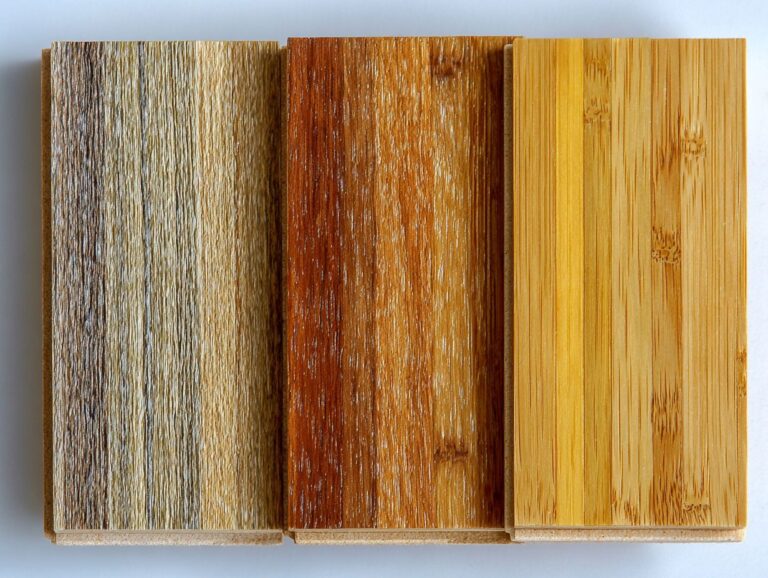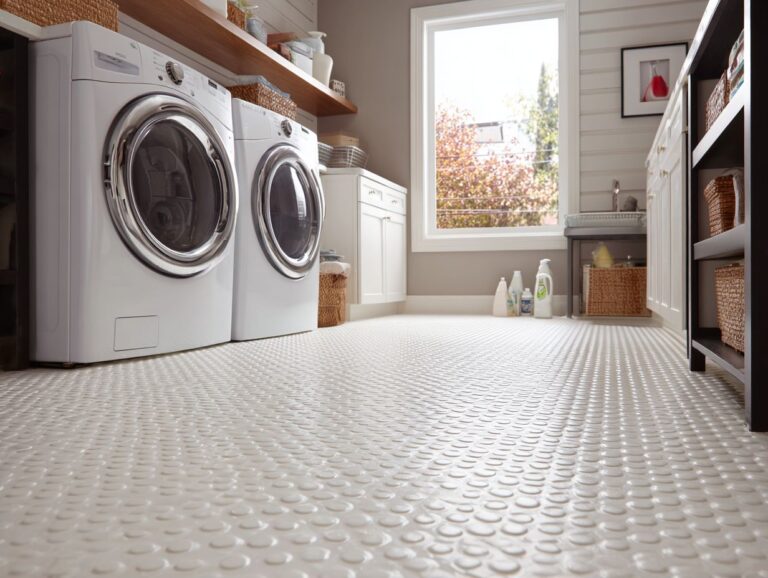Flooring R-Values – Insulation Properties Guide
Knowing the R-Values of flooring helps make your building project energy efficient. R-Values measure insulation effectiveness, impacting your home’s thermal performance. With information from Insulation4US, this guide will explain the importance of R-Value and U-Value and discuss different flooring materials. Learn how to choose the best options for insulation and maximize comfort in your space, ensuring a wise investment for years to come.
Key Takeaways:
Contents
- Understanding Insulation Properties
- Common Flooring Materials and Their R-Values
- R-Value of Various Flooring Materials
- Factors Affecting R-Values
- Measuring R-Values
- Choosing the Right Flooring for Insulation
- Installation Tips for Maximizing R-Values
- Frequently Asked Questions
- 1. What is R-Value and how does it affect flooring insulation properties?
- 2. What factors can affect the R-Value of flooring materials?
- 3. How can I determine the R-Value of my current flooring?
- 4. Are there any recommended R-Values for flooring in different climates?
- 5. How can I improve the R-Value of my flooring?
- 6. What are some benefits of choosing flooring materials with a higher R-Value?
Definition of R-Value
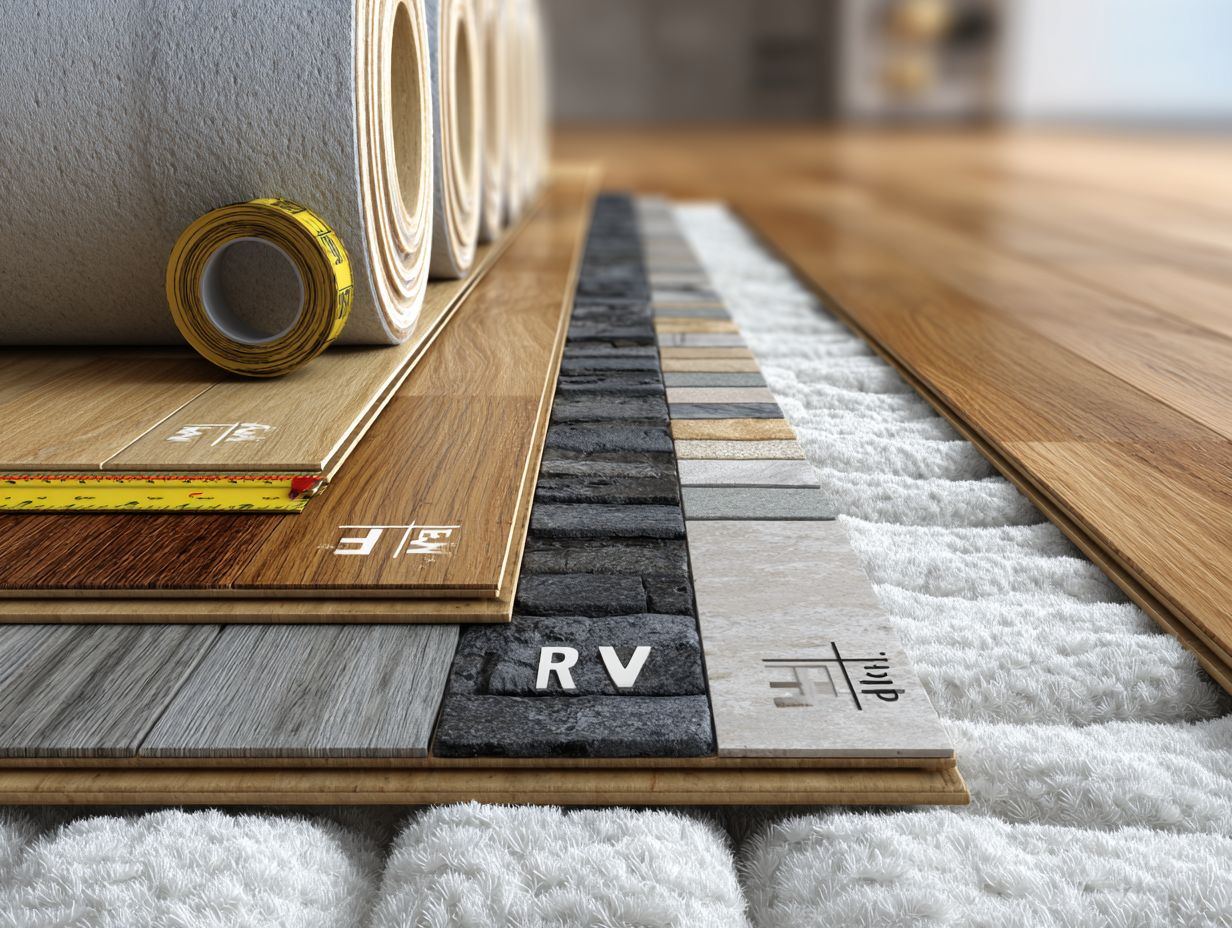
R-Value measures the thermal resistance of insulation materials, indicating their effectiveness in reducing heat loss or gain.
An R-Value is important for measuring how well a material insulates. For instance, fiberglass insulation generally has an R-Value of about 2.9 to 3.8 per inch, while foam board can achieve R-Values of 4.0 to 6.5 per inch, offering superior thermal performance.
Cellulose insulation also ranks well, typically around 3.1 to 3.7 per inch. When selecting insulation, consider both R-Value and application; for walls in colder climates, opt for materials with higher R-Values to maximize energy efficiency.
Importance of R-Values in Flooring
R-Values are important for floor insulation, influencing a home’s ability to save energy and stay comfortable.
A higher R-Value indicates better insulation. For instance, carpet with an R-Value of 2.0 can keep living spaces warmer during winter, while laminate with an R-Value of 0.8 may lead to higher heating costs.
When choosing flooring, think about the weather: in cooler places, pick materials with R-Values above 3.0 to keep warmth better.
Energy modeling software helps you estimate energy savings by selecting various flooring materials, allowing you to make informed choices that balance comfort and cost.
Understanding Insulation Properties
Different insulation materials have specific features that affect how well they keep heat in or out and whether they’re suitable for different uses. When considering materials, it can be enlightening to explore options like cork, known for its impressive insulation properties. Worth exploring: Cork Flooring Benefits – Sustainability and Comfort Guide.
Types of Insulation Materials
Common types of insulation materials include:
- Cellulose typically offers an R-Value ranging from 3.1 to 3.8 per inch, and it is made from recycled paper, which is good for the environment.
- Fiberglass, the most popular choice, has an R-Value ranging from 2.9 to 3.8, suitable for walls and attics.
- Spray foam, with an R-Value of 5.0 to 6.5, provides excellent air sealing, ideal for hard-to-reach areas.
- Mineral wool, valued for its fire resistance, has an R-Value of 3.0 to 3.7 and is often used in soundproofing applications.
- Rigid foam offers high insulating values of 4.0 to 6.5 and is commonly applied in basement walls.
How Insulation Works
Insulation works by reducing heat flow, utilizing materials with high thermal resistance to slow down temperature transfer.
For example, fiberglass insulation is commonly used in attics and walls due to its effective R-value, which measures thermal resistance.
Closed-cell spray foam is more expensive but seals air effectively and keeps out moisture, making it ideal for basements.
Cellulose insulation offers a sustainable option, often derived from recycled paper, which can effectively fill gaps and reduce air leakage.
Selecting the right type depends on factors like climate, building type, and budget, as each material contributes differently to overall energy efficiency.
Common Flooring Materials and Their R-Values
Different types of flooring materials have varying R-Values, which affect their ability to insulate and their energy efficiency.
R-Value of Various Flooring Materials
R-Value of Various Flooring Materials
The concept of R-value is important to know how well different flooring materials keep heat in. The R-value measures a material’s capacity to resist heat flow, with higher values indicating better insulating properties. When choosing flooring materials, the R-value gives important information about how each material affects a building’s energy efficiency.
While the dataset provided lacks specific numerical data, it suggests a focus on comparing different flooring materials. Generally, materials such as carpet, hardwood, laminate, and tile can each have varying R-values based on their composition and thickness.
- Carpet: Typically offers higher R-values due to its fibrous nature, providing better insulation than harder surfaces. The R-value increases with thicker padding underneath, making it a common option for places that need more warmth.
- Hardwood: Has a moderate R-value. While it does not insulate as effectively as carpet, its natural density can provide some thermal resistance. Hardwood is valued for its look and strength.
- Laminate: Offers similar insulation to hardwood but with a potentially lower R-value depending on its core material. It serves as a budget-friendly alternative to hardwood while still contributing to energy efficiency, especially when installed with an insulating underlayment.
- Tile: Generally presents the lowest R-value among common flooring options, as materials like ceramic and porcelain transfer heat more readily. While this can be advantageous in warm climates, it may not be ideal for colder environments without supplemental heating.
Knowing the R-value of floor materials is important for picking the right floors, especially in areas with varying temperatures. Selecting materials with appropriate R-values can lead to improved comfort, reduced energy consumption, and lower heating or cooling costs.
Carpet
Carpet typically offers an R-Value ranging from 0.5 to 2.0, providing decent thermal resistance and comfort underfoot.
This thermal resistance helps to maintain a stable indoor temperature, reducing heating and cooling costs.
Compared to hardwood or tile, which often have lower R-Values (usually 0.5 or less), carpet serves as a superior insulator. For an energy-efficient choice, consider products made from natural fibers, like wool, which provide better insulation and durability.
Choosing carpets with higher R-Values can contribute significantly to energy savings, especially in colder climates where maintaining warmth is essential.
Vinyl Flooring
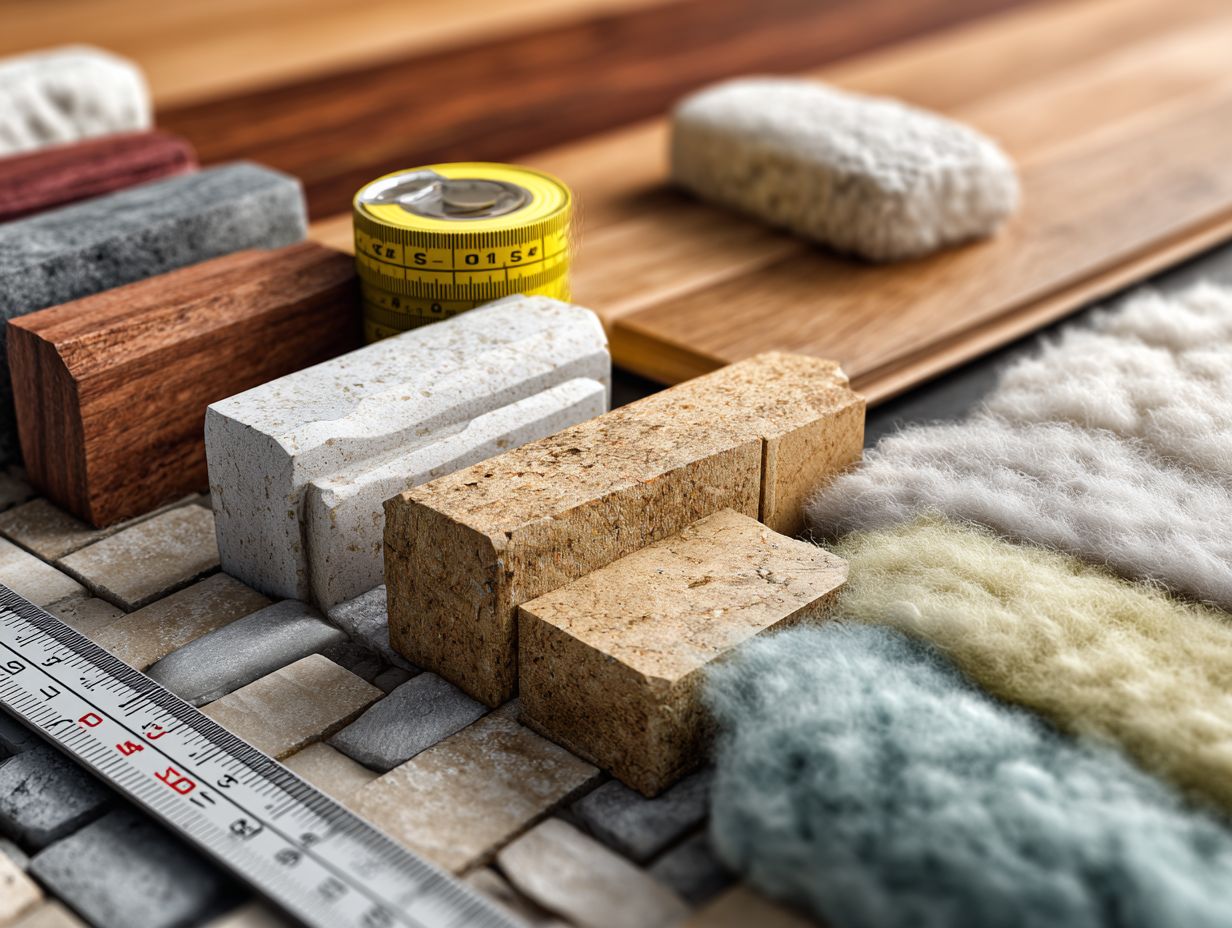
Vinyl flooring generally has an R-Value around 0.2 to 0.4, offering less insulation than traditional carpet or wood options.
Vinyl flooring has a low R-value, so it might not be the best option for areas with cold weather where keeping heat in is important.
For energy efficiency, consider combining vinyl with thermal underlayment, which can improve insulation by adding an extra layer of protection. Products like Roberts 1/4″ Foam underlayment can improve heat retention and reduce sound transmission.
Area rugs can make living spaces warmer and more comfortable, improving their look and feel despite the typical issues with vinyl flooring.
Laminate Flooring
Laminate flooring has an R-Value ranging from 0.5 to 0.8, which means it offers a moderate level of insulation for homes.
This R-Value indicates that while laminate can help reduce heat transfer, it doesn’t insulate as effectively as carpet (with R-Values around 2-4) or cork flooring (approximately 1.2-2.0).
In colder areas, pair laminate with underlayment materials like foam or cork sheets to improve insulation and increase warmth.
Conversely, if you’re in a warmer area, laminate’s moderate insulation may suffice, complementing radiant heating systems without excessive heat retention.
Make sure to think about the weather in your area when choosing the best flooring option.
Hardwood Flooring
Hardwood flooring typically delivers an R-Value of about 0.8 to 1.5, providing good thermal resistance in home environments.
This level of insulation can lead to lower energy costs, especially in climates with significant temperature fluctuations.
To improve energy use, think about putting insulation below the hardwood. Using foam padding can improve heat insulation and lower sound levels.
Maintaining proper humidity levels in your home can prevent the wood from expanding or contracting, which preserves its insulative properties.
In the end, although hardwood provides some insulation, using it with the right underlayment and managing humidity will achieve better energy efficiency.
Ceramic and Porcelain Tile
Ceramic and porcelain tiles generally have lower R-Values, around 0.1 to 0.2, which can lead to higher heat loss if not paired with sufficient underlayment.
For better heat retention, use an underlayment with a higher R-Value, usually between 1.0 and 2.0.
Options like foam underlayment or cork sheets are both effective and can significantly improve comfort. For example, a cork underlayment offers both insulation and sound absorption, which is perfect for multi-story homes.
Putting the layer under the tile correctly improves the seal, reducing heat loss and making your home more energy-efficient.
Factors Affecting R-Values
The R-Values are impacted by material thickness, density, and moisture levels, which affect how well they insulate.
Thickness of Material
The thickness of insulation material directly correlates with its R-Value; more thickness usually means higher thermal resistance.
For instance, fiberglass batts measuring 3.5 inches thick may have an R-Value of about 11. If you increase the thickness to 6 inches, the R-Value can rise to around 19.
Similar trends apply to foam boards; a 1-inch foam board typically has an R-Value of around 5. Increasing the thickness to 2 inches raises the R-Value to 10.
This relationship highlights the importance of selecting insulation with appropriate thickness to achieve desired energy efficiency in homes.
Density and Composition
Density and composition of insulation materials influence their R-Value; denser materials often provide better thermal resistance.
For instance, fiberglass insulation typically has an R-Value of about 2.9 to 3.8 per inch, depending on its density. In contrast, cellulose, which is denser due to its compacted structure, boasts an R-Value of around 3.1 to 3.7 per inch.
This indicates that a denser material like cellulose can provide superior thermal performance in certain applications. When selecting insulation, consider your specific climate and energy efficiency goals; integrating a blend of both materials might offer a balanced approach, ensuring optimal comfort and cost savings.
Moisture Content
Moisture content can significantly reduce insulation effectiveness, often lowering the expected R-Value of materials.
For example, fiberglass insulation can drop from an R-Value of 30 to as low as 15 if it absorbs moisture. This reduction results in higher energy costs and a greater chance of mold developing.
To mitigate this, use vapor barriers like polyethylene sheeting during installation and regularly inspect roofs and basements for leaks.
Employing tools such as a moisture meter can help identify problematic areas before they lead to significant energy efficiency losses. By proactively addressing moisture issues, you can maintain optimal insulation performance.
Measuring R-Values

Measuring R-Values is necessary to check how well insulation works and to meet building codes.
Testing Methods
Common R-Value testing methods include ASTM C518, using thermal imaging, and laboratory evaluations to assess insulation performance.
ASTM C518 is a standardized test that measures thermal resistance by assessing heat flow through insulation samples. Thermal imaging gives immediate visual results on a building’s heat efficiency, showing spots where heat escapes.
Testing in labs often includes checking insulation by using consistent settings to guarantee accuracy. Following these standards is important for getting correct R-Values, as they give dependable references for judging how well insulation works and meeting building codes.
Understanding R-Value Ratings
R-Value ratings provide a standardized way to compare insulation products, ensuring consumers make informed decisions based on energy efficiency.
R-Value measures insulation’s resistance to heat flow; the higher the R-Value, the better the insulation’s effectiveness. For example, fiberglass batts typically have R-Values ranging from R-11 to R-38, while foam board insulation can achieve R-5 to R-10 per inch.
When purchasing, consider factors such as climate and application area; in colder regions, opt for products with higher R-Values. Evaluate the product type-for attic insulation, R-38 is the recommended minimum, while walls may require R-13 to R-21.
Always check the manufacturer’s details to get the best performance for your needs.
Choosing the Right Flooring for Insulation
Picking the right flooring involves considering insulation, the climate where you live, and construction rules to make sure it uses energy well.
Climate Considerations
Climate is important in choosing the right flooring materials and their R-Values for the best insulation.
In colder climates, higher R-Values are essential for reducing heat loss. For instance, the Department of Energy recommends R-19 for floors in areas with harsh winters.
Conversely, milder climates can work with R-13, significantly reducing material costs without sacrificing comfort.
When selecting flooring, consider options like:
- Carpet
- Cork
which offer better insulation properties in cooler regions, while tile or laminate may be suitable for warmer areas.
Always check local rules to make sure you meet area R-Value standards.
Building Codes and Standards
Following local building rules makes sure that floor insulation meets necessary R-Value levels, helping with energy savings and safety.
For example, the International Energy Conservation Code (IECC) mandates specific R-Values depending on climate zones. In cold climates, floor insulation under the building must achieve at least R-30, ensuring warmth and reducing heating costs.
To comply, builders can use fiberglass batts or spray foam insulation, both good choices. Local code enforcement may require periodic inspections to verify insulation integrity.
Being aware of these regulations improves energy use and prevents expensive penalties or corrections during building.
Installation Tips for Maximizing R-Values
Proper installation methods can greatly improve the insulation level of your flooring, increasing energy efficiency and saving money.
Subfloor Preparation
Properly preparing the subfloor is important for keeping insulation working well and maintaining R-Value.
-
Start by cleaning the subfloor to remove any debris, dust, or old adhesive residues; a vacuum and a damp mop are effective for this.
-
Next, inspect for moisture using a moisture meter-levels should ideally be below 14% to prevent mold growth. If moisture is detected, consider applying a sealant or using a dehumidifier.
-
Check that the surface is flat with a long leveling tool. Any uneven areas can be filled with leveling compound to create a smooth base for your insulation.
-
Doing these steps will greatly improve your insulation effectiveness.
Proper Installation Techniques
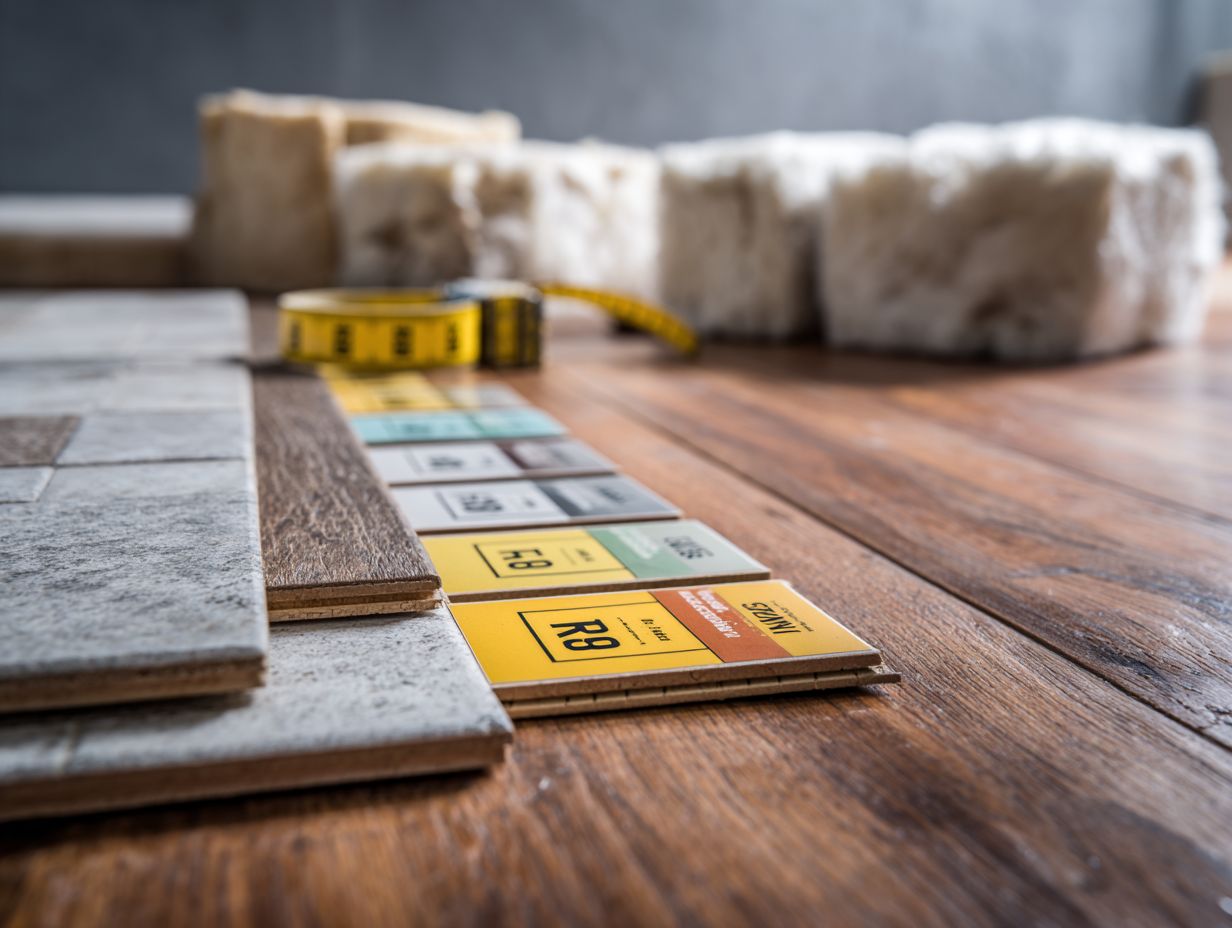
Employing proper installation techniques is essential for ensuring that insulation maintains its intended R-Value and effectiveness over time.
To get the best insulation results, begin by carefully sealing all edges using suitable caulk or foam sealant. This prevents air infiltration, which can significantly reduce insulation effectiveness.
Use a sturdy vapor barrier over the insulation to protect against moisture, particularly in basements or crawlspaces. Make sure the flooring pieces join well; you might want to use tongue-and-groove boards for a better fit.
Maintain an even distribution of insulation throughout the space, avoiding gaps or compression that can diminish overall performance.
Frequently Asked Questions
1. What is R-Value and how does it affect flooring insulation properties?
R-Value is a measure of a material’s resistance to heat flow. The higher the R-Value, the more effective the material is at insulating. Choosing flooring with a higher R-Value can make your home feel warmer in the winter and cooler in the summer.
2. What factors can affect the R-Value of flooring materials?
The R-Value of flooring materials can be affected by their composition, thickness, and installation method. For example, carpet may have a lower R-Value than hardwood flooring, and a thicker layer of insulation under the flooring can increase its R-Value.
3. How can I determine the R-Value of my current flooring?
The R-Value of flooring is typically listed on the product packaging or can be found through the manufacturer’s website. You can also consult with a flooring specialist to determine the R-Value of your current flooring.
4. Are there any recommended R-Values for flooring in different climates?
Yes, the recommended R-Value for flooring can vary based on the climate of your region. For colder climates, a higher R-Value is recommended to better insulate your home, while in warmer climates, a lower R-Value may be sufficient.
5. How can I improve the R-Value of my flooring?
To improve the R-Value of your flooring, you can add a layer of insulation under the flooring or choose materials with a higher R-Value. Proper installation techniques can also help increase the R-Value of your flooring.
6. What are some benefits of choosing flooring materials with a higher R-Value?
In addition to better insulation properties, choosing flooring with a higher R-Value can also lead to energy cost savings, as your home will require less heating and cooling. It can also help reduce outside noise and improve overall comfort in your home.
